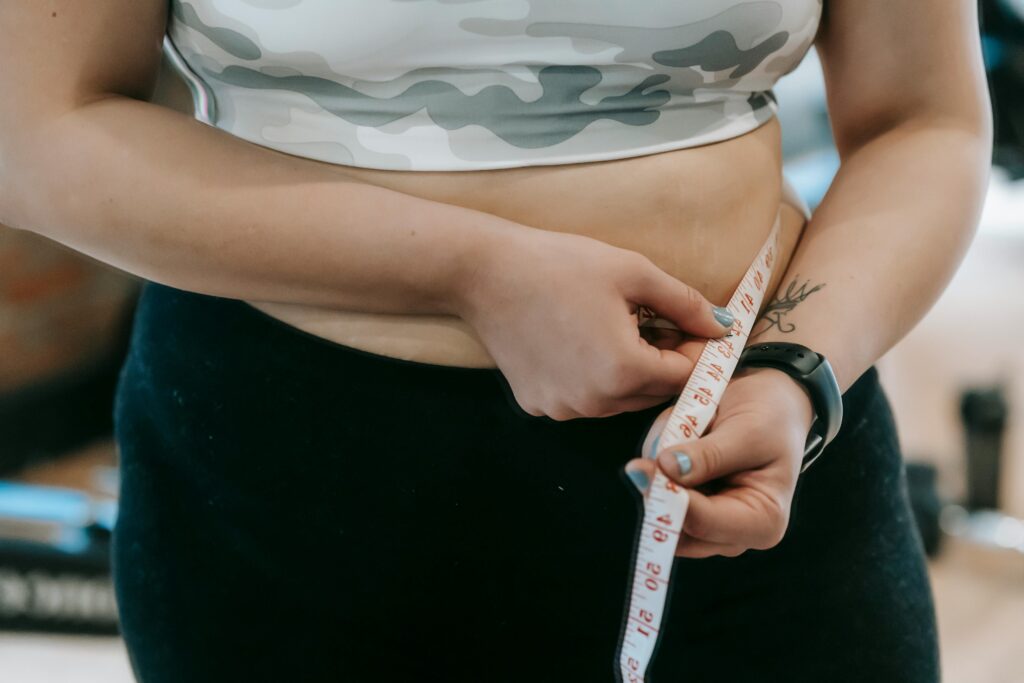When it comes to health and fitness, tracking the calories you burn is as important as monitoring the calories you consume. Whether you’re trying to lose weight, gain muscle, or simply stay healthy, understanding how your body uses energy throughout the day is essential. One of the most reliable tools for tracking this data is Cronometer, an app designed to help users log their food intake, exercise, and energy expenditure. In this article, we will dive deep into how Cronometer calculates calories burned, including its integration with activity trackers, how it adjusts for different exercises, and how you can use this data to meet your fitness goals.

How Does Cronometer Calculate Calories Burned?
Cronometer’s calories burned tracker is not just a simple estimate – it’s a combination of several different metrics that reflect your body’s energy expenditure. The main components of this calculation include:
1. Basal Metabolic Rate (BMR)
BMR is the number of calories your body needs to perform basic life-sustaining functions, such as breathing, circulation, and cell production, while at rest. This value is essential because it serves as the baseline for how many calories you burn daily, even when you’re not doing any physical activity.
Cronometer calculates your BMR using the Mifflin St. Jeor equation, which factors in your age, sex, height, and weight. You can adjust your BMR calculation by selecting settings such as pregnancy or breastfeeding if applicable. If you prefer, you can also manually input a custom value.
2. Activity Level
Cronometer allows you to adjust your activity level, which is a key factor in calculating your calories burned. This activity level reflects the energy you expend throughout the day outside of exercise. You can select from a range of activity levels, including:
- Sedentary: Little or no physical activity (e.g., desk job, minimal movement)
- Lightly Active: Light activity such as walking or household chores
- Moderately Active: More intense activity like gym workouts or active jobs
- Very Active: Intense physical training or a physically demanding job
Your baseline activity is automatically adjusted based on your selection, and Cronometer uses this data to estimate how many calories you burn throughout the day.
3. Exercise and Workouts
One of the standout features of Cronometer is its ability to log exercise and activity. Whether you’re running, swimming, lifting weights, or engaging in other forms of physical activity, you can easily log these exercises in the app. Cronometer calculates the calories burned during these activities based on the type, duration, and intensity of the exercise.
Moreover, Cronometer can integrate with fitness trackers and devices like Fitbit, Apple Watch, or Garmin, which automatically import data about your workouts and daily activity. This integration provides more accurate data since it continuously tracks your movements throughout the day.
4. Tracker Activity
If you sync your Cronometer app with a fitness tracker, the app will also incorporate the data from your device. This “Tracker Activity” includes general movement throughout the day, such as walking or taking the stairs. The activity levels recorded by your device are synced with Cronometer and will contribute to the total calories burned, helping you avoid overestimating your energy expenditure by relying solely on your baseline activity.
When this tracker data is added to the app, your baseline activity is replaced with the tracker activity in the calories burned calculation. This ensures a more accurate reflection of your overall energy use, especially if you’ve been particularly active.
5. Thermic Effect of Food (TEF)
The thermic effect of food refers to the energy your body uses to digest, absorb, and process food. This is a minor contributor to the total calories burned, but it can still make a difference, particularly if you’re eating larger meals or meals rich in protein. Cronometer allows you to toggle this setting on so that it includes this factor in your calories burned estimate. If you prefer a more precise calculation, it’s worth including TEF in your energy expenditure data.

How Cronometer Adjusts for Exercise and Activity
Adjusted Baseline Activity
One of the most important features of Cronometer’s calories burned tracker is its ability to adjust your baseline activity when you log exercises or sync your fitness tracker. As you add exercises or your tracker records more movement, Cronometer automatically reduces your baseline activity to avoid double-counting calories burned.
For example, let’s say you’ve selected a baseline activity of 400 calories for the day. If you then exercise for an hour, burning 250 calories, your baseline activity will be reduced to account for this exercise. Once the exercise is fully logged, the baseline activity section will disappear from the “Burned” circle in the app, leaving you with a more accurate representation of your total calorie burn.
Detailed Breakdown of Calories Burned
In the Cronometer app, you can easily view the detailed breakdown of your calories burned by tapping the “Burned” circle at the top of your diary page. This circle provides a visual representation of how your total calories burned are divided into various categories, such as:
- BMR
- Activity Level
- Exercise
- Tracker Activity
- Thermic Effect of Food
This breakdown helps you see which areas are contributing the most to your energy expenditure, making it easier to adjust your habits if needed.
Benefits of Tracking Calories Burned in Cronometer
Accurate Insights for Weight Loss or Gain
By understanding how many calories you burn throughout the day, you can make more informed decisions about your diet and exercise routine. For weight loss, you need to create a calorie deficit, meaning you burn more than you consume. On the flip side, for muscle gain, you should aim to consume more calories than you burn. Cronometer’s precise calculations of calories burned can guide you to achieve these goals.
Track Fitness Progress
As you continue using Cronometer, you’ll gain a clearer picture of how your fitness is progressing. Whether you’re increasing your exercise intensity or improving your activity level, tracking calories burned allows you to see the direct impact of your hard work.
Avoid Overestimating Calories Burned
A common mistake in fitness tracking is overestimating how many calories you burn. Many people rely solely on exercise data or generalized formulas, which can lead to inaccurate calorie estimates. Cronometer’s integration with activity trackers and its method of adjusting for baseline activity help provide a more accurate reflection of your true energy expenditure.

Tips for Getting the Most Out of Cronometer’s Calories Burned Tracker
To ensure you are maximizing the accuracy and effectiveness of Cronometer’s calories burned tracker, it’s important to follow some key strategies. By applying these tips, you can ensure that the data you’re tracking is as precise as possible, helping you achieve your fitness and health goals.
- Be Consistent: Log your meals, exercises, and activity levels consistently for the most accurate data. The more precise your entries, the better the app will be at tracking your calories burned. Consistency in logging is essential for accurate tracking and understanding of your energy expenditure over time.
- Use a Fitness Tracker: Sync your Cronometer app with a fitness tracker to automatically capture your daily activity. This will give you a much more accurate picture of your total energy expenditure. Fitness trackers help track even small movements throughout the day, ensuring that no calories burned go unaccounted for.
- Customize Your Settings: Adjust your baseline activity level to match your real-life routine. The more accurate your activity level, the more precise your total calories burned will be. Customizing this setting based on your daily activity ensures the app gives you a more personalized and accurate calorie burn estimate.
- Track Your Workout: Don’t just rely on general activity data – make sure to log your specific workouts to get an accurate estimate of calories burned from exercise. Logging detailed workout data helps Cronometer calculate the calories burned from each exercise, providing a clearer view of your exercise-related energy expenditure.

Track Your Nutrition with Ease: ReciMe
If you’re looking for a simpler way to track your calories burned and macronutrients, ReciMe could be a great alternative to Cronometer. While Cronometer excels at providing detailed insights into your total energy expenditure, including calories burned through activity and exercise, we understand that not everyone needs such a complex system. We designed ReciMe to offer a more streamlined approach to tracking nutrition and macronutrients, focusing on what matters most – calories, protein, fats, and carbs – in a way that’s easy to follow.
Here’s how ReciMe simplifies your tracking:
- Automatic Macronutrient Calculation: When you save your recipes in ReciMe, we automatically calculate the calories and macronutrients (protein, fat, and carbs) based on the ingredients you input. This means you don’t need to worry about tracking every detail or manually adjusting figures, making it simple and straightforward.
- Recipe Organization and Meal Planning: ReciMe emphasizes recipe management and meal planning, helping you stay organized with your meals.
- Syncing Across Devices: ReciMe is available on both iOS and Android, as well as through a Chrome extension. This makes it easy to use across multiple devices, ensuring you can access your data no matter where you are.
We created ReciMe focusing on making it easier to manage your meals and macronutrients without the complexity of integrating various activity trackers or adjusting multiple settings. For anyone who just needs a simple tool to track nutrition and meal planning, ReciMe offers a more user-friendly alternative.
Just try it – you’ll love it:


Conclusion
In conclusion, Cronometer is a powerful and reliable tool for tracking calories burned and managing your overall energy expenditure. By combining several key metrics, such as Basal Metabolic Rate (BMR), activity level, exercise, tracker activity, and the Thermic Effect of Food (TEF), Cronometer provides an accurate and detailed view of how many calories you burn throughout the day. Whether you are working on losing weight, building muscle, or simply staying active, this app can help you better understand your body’s energy needs and make more informed decisions about your nutrition and exercise routine.
The app’s ability to integrate with fitness trackers, adjust baseline activity, and offer a comprehensive breakdown of your daily calorie expenditure makes it a standout tool for anyone serious about tracking their fitness journey. By consistently logging your meals and activities, syncing with devices, and customizing your settings, you can ensure that Cronometer provides the most accurate data for your health goals. With this data in hand, you’ll be better equipped to optimize your calorie intake and energy expenditure for maximum results.
FAQs
How does Cronometer calculate my total calories burned?
Cronometer calculates your total calories burned by factoring in several components: your Basal Metabolic Rate (BMR), the energy expended from your activity level, exercise, tracker activity, and the Thermic Effect of Food (TEF). By integrating data from your manual entries and synced devices, the app provides an accurate estimate of your total daily energy expenditure.
Can Cronometer integrate with fitness trackers?
Yes, Cronometer can integrate with various fitness trackers such as Fitbit, Apple Watch, and Garmin. This allows the app to automatically import data about your activity throughout the day, providing a more accurate and continuous calculation of your calories burned.
How do I customize my activity level in Cronometer?
You can adjust your activity level in Cronometer by selecting an option that matches your daily routine. The app offers several activity levels, including Sedentary, Lightly Active, Moderately Active, and Very Active. This setting helps Cronometer more accurately estimate how many calories you burn throughout the day based on your lifestyle.
What is the Thermic Effect of Food (TEF)?
The Thermic Effect of Food (TEF) refers to the energy your body uses to digest, absorb, and process food. This contributes a small but notable amount to your total calories burned. Cronometer allows you to toggle the TEF setting on, so it’s included in your calories burned calculation.
Can Cronometer help me track my weight loss or muscle gain goals?
Yes, Cronometer is an excellent tool for weight management, whether you’re aiming to lose weight, gain muscle, or maintain your current weight. By providing precise data on calories burned, you can create an effective calorie deficit for weight loss or a surplus for muscle gain. Monitoring this data helps ensure you’re staying on track with your fitness goals.
